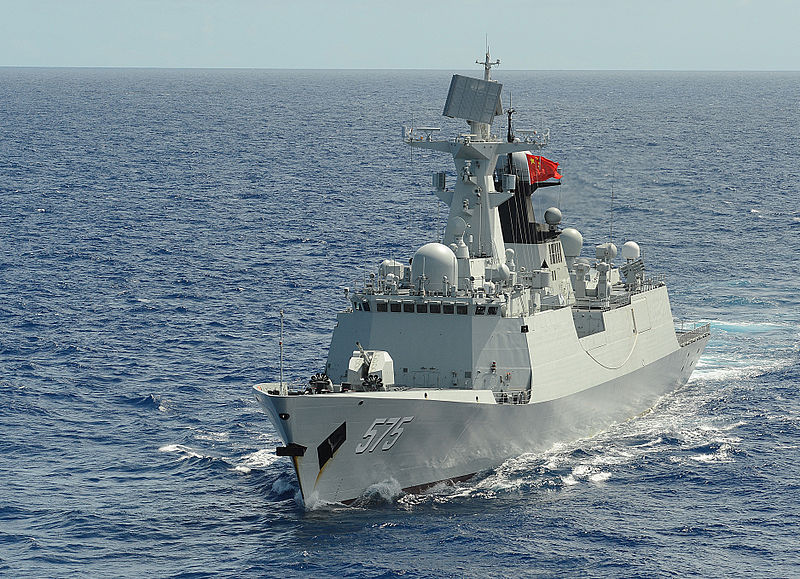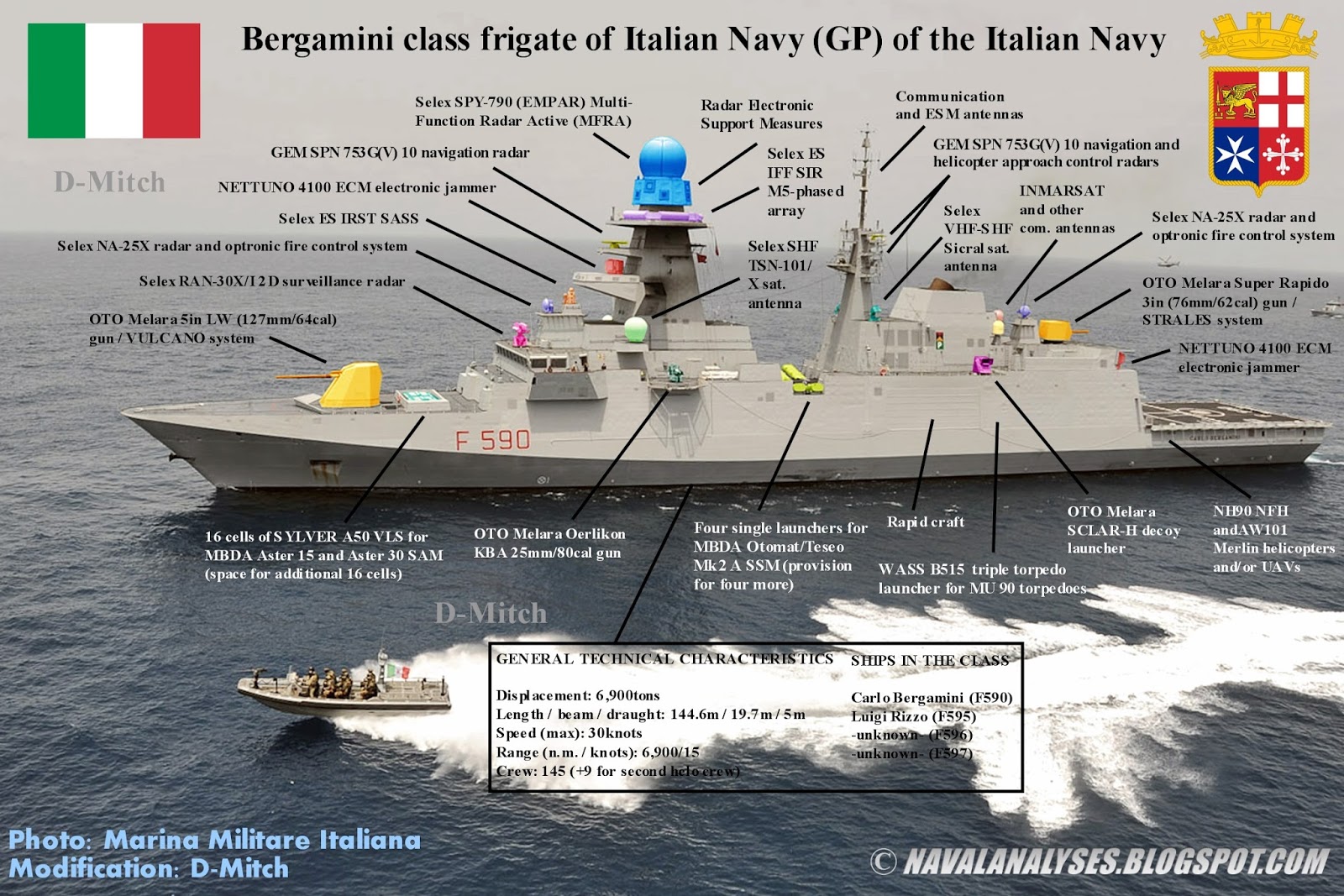Quwa
Research Partner

- Joined
- May 16, 2006
- Messages
- 2,538
- Reaction score
- 47
- Country
- Location
THE PAKISTAN NAVY’S FRIGATE OPTIONS
A look at how the Pakistan Navy might acquire new and used frigates
15 February 2016
By Bilal Khan
‘Frigates’ are surface warships. These warships are the mainstay of a naval fleet, often serving in roles such as patrolling a country’s maritime space, escorting other ships, and engaging in direct combat operations against enemy naval assets. A modern frigate is a multi-mission system, most often equipped for anti-ship warfare (AShW), anti-submarine warfare (ASW), and anti-air warfare (AAW).
It is important to understand that modern frigates, i.e. systems equipped with sufficient AAW capabilities, are indispensable naval assets. Yes, diesel-electric submarines (SSKs) have emerged as major threats for all surface combatants, but for one to possess the maximum possible flexibility in using their own SSKs, it is imperative they have the means to counter systems designed to track and hunt SSKs, such as maritime patrol aircraft (MPA).
A frigate equipped with sufficient AAW capabilities, particularly in the form of medium-range surface-to-air missiles (SAMs), is an example of an effective countermeasure. Unfortunately, the Pakistan Navy (PN) is completely lacking in this regard, and there is no clear roadmap as to when or how this will be resolved.
The PN’s current fleet is composed of one FFG-7 (Oliver Hazard Perry-class), five ex-Royal Navy Type-21 (Amazon-class) and four F-22P (Zulfiqar-class) frigates. Taken together, the FFG-7, Type-21 and F-22P are decent AShW and ASW platforms, but their collective AAW capabilities are restricted to short-range air defence (SHORAD) systems. For example, the FM-90 SAM used on the F-22P has a maximum engagement range of 15km. While this is good for protecting the vessel, it does not offer area wide air defence coverage.
Moreover, the PN’s Type-21s are heavily aged platforms that are basically in need of being phased out. Once these ships are gone, the PN will be left with a glaring capability gap in its surface fleet. In order to rectify this problem, the PN had originally hoped to acquire up to six retired FFG-7/Oliver Hazard Perry-class frigates from the U.S., but general hostility in Congress towards Pakistan closed this avenue. Instead, the PN will have to look for used frigates in other countries.
For the PN, it may not be prudent to heavily invest in upgrading used platforms. At this stage, the PN simply needs ships it can operate in accordance with its peacetime needs, such as its participation in Combined Task Force 150. But in terms of the long-term, the PN will be best served by selecting a new-generation platform, which it can then build-upon to develop a solution tuned to its specific needs. While several options may exist in this regard, it is likely that the PN would ultimately select China Shipbuilding and Offshore International Co. (CSOC) as its partner in this project.
It is worth noting that the PN is acquiring eight new submarines from CSOC, hence it is well within the realm of reason to see the PN expand that partnership into the area of frigates. In fact, CSOC even has an export-focused design, i.e. the “High Performance Frigate.” The 3700 ton High Performance Frigate utilizes a stealthy hull design meant to reduce the ship’s radar and infrared signatures. With a length of 135 metres, maximum speed of 28 knots, and a crew of around 110 personnel, the High Performance Frigate is essentially a medium-sized multi-mission frigate.
According to the defence news site Navy Recognition, CSOC’s design incorporates a 32-cell vertical launch system (VLS). These VLS cells could be used to deploy medium-range SAMs, such as the Chinese HHQ-16, which has a range of at least 40km. In addition, the frigate can be equipped with two anti-ship missile (AShM) quad-launchers and a 76.2mm main naval gun. Two close-in weapon-systems (CIWS) and a point-defence missile system (PDMS) are also present for protection against incoming anti-ship missiles.
Interestingly, CSOC did not specify the frigate’s ASW capabilities. Instead, CSOC representatives told Navy Recognition that it “depends on customer needs.” Since CSOC did not explicitly mention that the VLS was restricted to SAMs, it is possible that the design could be configured to carry (in addition to two triple ASW torpedo launchers) a VLS-launched rocket-powered torpedo solution, such as the CY-5. This would confer the High Performance Frigate with VL-ASROC-style ASW capabilities. While a modern frigate’s torpedo tubes give it ASW capabilities, ASROC-like capability can offer additional engagement range.
It is evident that the CSOC High Performance Frigate design has the features (e.g. VLS) to warrant at least the possibility of serving as the basis of the PN’s next-generation surface fleet. CSOC has developed a balanced design, and if paired with the full-suite of Chinese armaments (i.e. HHQ-16 SAM, C-802 AShM, CY-5 VL-ASROC, FL-3000N PDMS, and Yu-7 ASW torpedo), a fleet of six to eight of these frigates would be an exponential leap compared to the PN’s existing fleet.
Moreover, the PN has the option to customize the design, which it could use to fulfill future requirements. For example, it could work with CSOC to develop an enlarged version with an additional 16 or 32 VLS-cells, which could be allocated for the Babur land-attack cruise missile (LACM) and/or long-range SAMs (100km+). A smaller number (three or four) of these large frigates could compliment a larger number (six to eight) of medium-sized frigates, thereby giving the PN a robust frigate fleet capable of addressing key maritime challenges, especially in wartime.
Unfortunately, Pakistan’s structural economic problems will dampen the PN’s modernization efforts. While an expensive acquisition, a new design offers long-term cost-savings (by freeing the PN of maintaining heavily aged platforms and replacing them more frequently), in addition to enhanced operational capabilities. Given that a fleet of modern multi-mission frigates is vital to Pakistan’s long-term maritime interests, it is imperative that the Pakistan Navy not be put into a situation to compromise on this front.
The Pakistan Navy’s Frigate Options
@Horus
A look at how the Pakistan Navy might acquire new and used frigates
15 February 2016
By Bilal Khan
‘Frigates’ are surface warships. These warships are the mainstay of a naval fleet, often serving in roles such as patrolling a country’s maritime space, escorting other ships, and engaging in direct combat operations against enemy naval assets. A modern frigate is a multi-mission system, most often equipped for anti-ship warfare (AShW), anti-submarine warfare (ASW), and anti-air warfare (AAW).
It is important to understand that modern frigates, i.e. systems equipped with sufficient AAW capabilities, are indispensable naval assets. Yes, diesel-electric submarines (SSKs) have emerged as major threats for all surface combatants, but for one to possess the maximum possible flexibility in using their own SSKs, it is imperative they have the means to counter systems designed to track and hunt SSKs, such as maritime patrol aircraft (MPA).
A frigate equipped with sufficient AAW capabilities, particularly in the form of medium-range surface-to-air missiles (SAMs), is an example of an effective countermeasure. Unfortunately, the Pakistan Navy (PN) is completely lacking in this regard, and there is no clear roadmap as to when or how this will be resolved.
The PN’s current fleet is composed of one FFG-7 (Oliver Hazard Perry-class), five ex-Royal Navy Type-21 (Amazon-class) and four F-22P (Zulfiqar-class) frigates. Taken together, the FFG-7, Type-21 and F-22P are decent AShW and ASW platforms, but their collective AAW capabilities are restricted to short-range air defence (SHORAD) systems. For example, the FM-90 SAM used on the F-22P has a maximum engagement range of 15km. While this is good for protecting the vessel, it does not offer area wide air defence coverage.
Moreover, the PN’s Type-21s are heavily aged platforms that are basically in need of being phased out. Once these ships are gone, the PN will be left with a glaring capability gap in its surface fleet. In order to rectify this problem, the PN had originally hoped to acquire up to six retired FFG-7/Oliver Hazard Perry-class frigates from the U.S., but general hostility in Congress towards Pakistan closed this avenue. Instead, the PN will have to look for used frigates in other countries.
For the PN, it may not be prudent to heavily invest in upgrading used platforms. At this stage, the PN simply needs ships it can operate in accordance with its peacetime needs, such as its participation in Combined Task Force 150. But in terms of the long-term, the PN will be best served by selecting a new-generation platform, which it can then build-upon to develop a solution tuned to its specific needs. While several options may exist in this regard, it is likely that the PN would ultimately select China Shipbuilding and Offshore International Co. (CSOC) as its partner in this project.
It is worth noting that the PN is acquiring eight new submarines from CSOC, hence it is well within the realm of reason to see the PN expand that partnership into the area of frigates. In fact, CSOC even has an export-focused design, i.e. the “High Performance Frigate.” The 3700 ton High Performance Frigate utilizes a stealthy hull design meant to reduce the ship’s radar and infrared signatures. With a length of 135 metres, maximum speed of 28 knots, and a crew of around 110 personnel, the High Performance Frigate is essentially a medium-sized multi-mission frigate.
According to the defence news site Navy Recognition, CSOC’s design incorporates a 32-cell vertical launch system (VLS). These VLS cells could be used to deploy medium-range SAMs, such as the Chinese HHQ-16, which has a range of at least 40km. In addition, the frigate can be equipped with two anti-ship missile (AShM) quad-launchers and a 76.2mm main naval gun. Two close-in weapon-systems (CIWS) and a point-defence missile system (PDMS) are also present for protection against incoming anti-ship missiles.
Interestingly, CSOC did not specify the frigate’s ASW capabilities. Instead, CSOC representatives told Navy Recognition that it “depends on customer needs.” Since CSOC did not explicitly mention that the VLS was restricted to SAMs, it is possible that the design could be configured to carry (in addition to two triple ASW torpedo launchers) a VLS-launched rocket-powered torpedo solution, such as the CY-5. This would confer the High Performance Frigate with VL-ASROC-style ASW capabilities. While a modern frigate’s torpedo tubes give it ASW capabilities, ASROC-like capability can offer additional engagement range.
It is evident that the CSOC High Performance Frigate design has the features (e.g. VLS) to warrant at least the possibility of serving as the basis of the PN’s next-generation surface fleet. CSOC has developed a balanced design, and if paired with the full-suite of Chinese armaments (i.e. HHQ-16 SAM, C-802 AShM, CY-5 VL-ASROC, FL-3000N PDMS, and Yu-7 ASW torpedo), a fleet of six to eight of these frigates would be an exponential leap compared to the PN’s existing fleet.
Moreover, the PN has the option to customize the design, which it could use to fulfill future requirements. For example, it could work with CSOC to develop an enlarged version with an additional 16 or 32 VLS-cells, which could be allocated for the Babur land-attack cruise missile (LACM) and/or long-range SAMs (100km+). A smaller number (three or four) of these large frigates could compliment a larger number (six to eight) of medium-sized frigates, thereby giving the PN a robust frigate fleet capable of addressing key maritime challenges, especially in wartime.
Unfortunately, Pakistan’s structural economic problems will dampen the PN’s modernization efforts. While an expensive acquisition, a new design offers long-term cost-savings (by freeing the PN of maintaining heavily aged platforms and replacing them more frequently), in addition to enhanced operational capabilities. Given that a fleet of modern multi-mission frigates is vital to Pakistan’s long-term maritime interests, it is imperative that the Pakistan Navy not be put into a situation to compromise on this front.
The Pakistan Navy’s Frigate Options
@Horus








